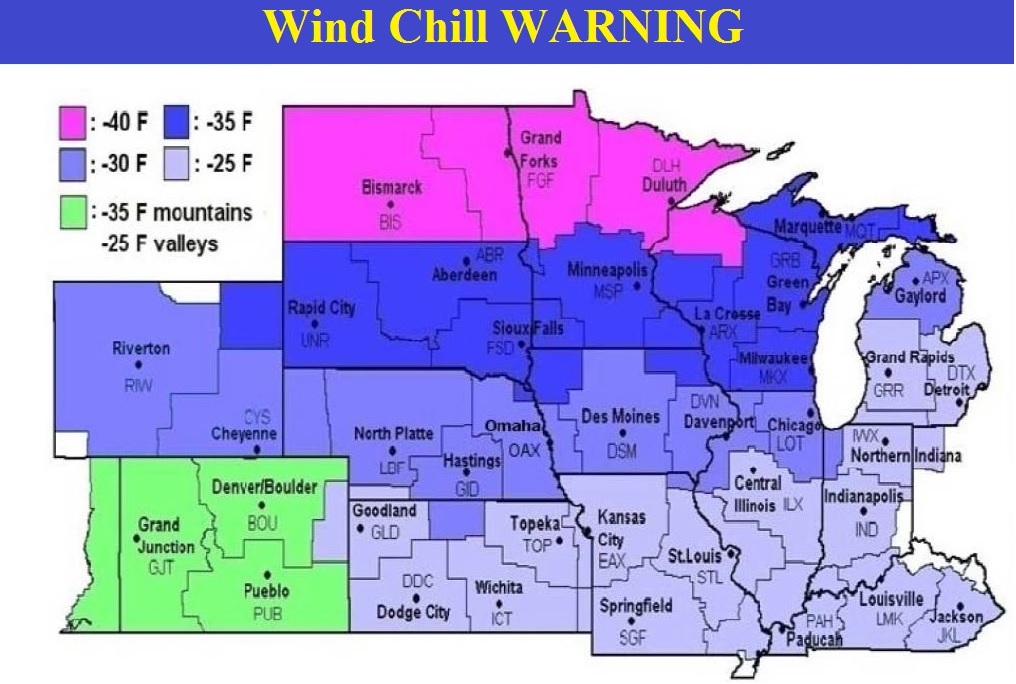Understanding the Importance of Wind Chill Warnings
Wind chill warnings are crucial indicators issued by meteorological departments to alert individuals about potentially dangerous weather conditions. The combination of wind and low temperatures can significantly affect how cold it feels outside. Posing risks to human health and safety. In this article, we will explore the significance of wind chill warning. Their impact on the body, and how to stay safe when such warnings are in effect.
The Science Behind Wind Chill:
Wind chill is the perceived decrease in temperature caused by the flow of air over exposed skin. It is influenced by both air temperature and wind speed. The faster the wind blows, the faster heat is drawn away from the body, resulting in a lower wind chill value. Wind chill warnings are issued when the combination of temperature and wind speed is expected to create hazardous conditions.
Understanding the Dangers:
Exposure to extreme wind chill can lead to various health hazards. Prolonged exposure without proper protection can cause frostbite, a condition where skin and underlying tissues freeze. The most vulnerable areas include the extremities such as fingers, toes, and the face. Additionally, hypothermia can occur when the body loses heat faster than it can produce, leading to a dangerous drop in core body temperature.
Importance of Wind Chill Warnings:
Wind chill warnings serve as a crucial tool to ensure public safety. By informing individuals about the potential dangers associated with low temperatures and high winds, these warnings prompt people to take necessary precautions. They also assist in preventing accidents, injuries, and cold-related emergencies by urging individuals to limit their time outdoors or stay indoors altogether.
Tips to Stay Safe during Wind Chill Warnings:
Dress Appropriately: Wear multiple layers of clothing, including a wind-resistant outer layer, to trap body heat and block the wind.
Protect Exposed Skin: Cover your head, face, hands, and feet with appropriate winter gear, such as hats, scarves, gloves, and insulated footwear.
Stay Hydrated: Cold air can cause dehydration, so it is important to drink fluids regularly to stay properly hydrated.
Avoid Overexertion: Intense physical activity during extreme wind chill can increase the risk of frostbite and hypothermia. Take breaks and pace yourself accordingly.
Keep Emergency Supplies Ready: Prepare an emergency kit with essentials like blankets, non-perishable food, water, flashlights, and a battery-powered radio in case of power outages or other emergencies.
Monitoring Wind Chill Warnings: To stay updated with wind chill warnings in your area, regularly check local weather forecasts, news updates, or official meteorological websites. Pay attention to any advisories or alerts issued by authorities and take immediate action to ensure your safety and well-being.
Conclusion:
Wind chill warnings play a vital role in keeping individuals informed and safe during periods of extreme cold and high winds. By understanding the science behind wind chill. Recognizing the dangers associated with it, and following the recommended safety tips. We can mitigate the risks and protect ourselves from cold-related injuries and illnesses. Always prioritize your safety and take wind chill warnings seriously to stay warm, healthy, and secure in challenging weather conditions.



